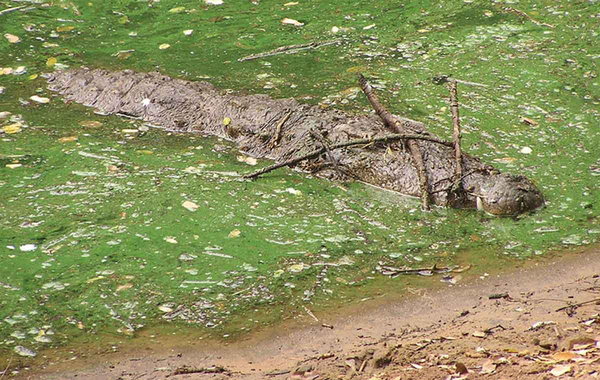MI weekly selection #53
Crocodiles, alligators use lures to attract prey
Alligators and crocodiles use lures to entice prey, the first reported use of tools by reptiles. Researchers surveyed alligators and crocodiles at four sites in Louisiana for a year, noting that the creatures balancing twigs and sticks on their snouts to lure birds during nesting seasons. “Use of objects as hunting lures is very rare among animals, being known to date only in captive capuchin monkeys, a few bird species and one insect,” according to the study.
Greek art may have inspired creation of Terracotta Warriors
The thousands of Terracotta Warriors buried near the mausoleum of Qin Shi Huangdi, the first emperor of China, were inspired by Greek art, according to research published in the Bulletin of the School of Oriental and African Studies. Ancient records recently translated say giant statues mysteriously appeared in the far west, inspiring the emperor to have his Terracotta Army built. These would be evidences of early contact between China and the West.
Crash may have brought life-producing minerals to Jupiter moon Europa
A new analysis of 15-year-old near-infrared images of Jupiter’s moon Europa found evidence of a collision with a comet or asteroid that may have deposited organic materials that can serve as the building blocks for life.
Universe might be a hologram, computer calculations suggest
Evidence backs up the theory that the universe is a massive holographic projection, according to two papers published on the arXiv repository. In one paper, a team at Ibaraki University calculated the internal energy of a black hole, its event horizon, entropy and other properties based on string theory and the effects of continuously appearing and disappearing virtual particles. In the other paper, they compute the inner energy of the gravity-less lower-dimension universe. “They have numerically confirmed, perhaps for the first time … that the thermodynamics of certain black holes can be reproduced from a lower-dimensional universe,” said theoretical physicist Leonard Susskind, who was not part of the research team.
Fruit flies can suss out just the right amount of ethanol for larvae
Clusters of neurons, working in opposition to one another, help the fruit fly Drosophila melanogaster determine just the right amount of ethanol to nourish its larvae. The system evolved to have great sensitivity.
